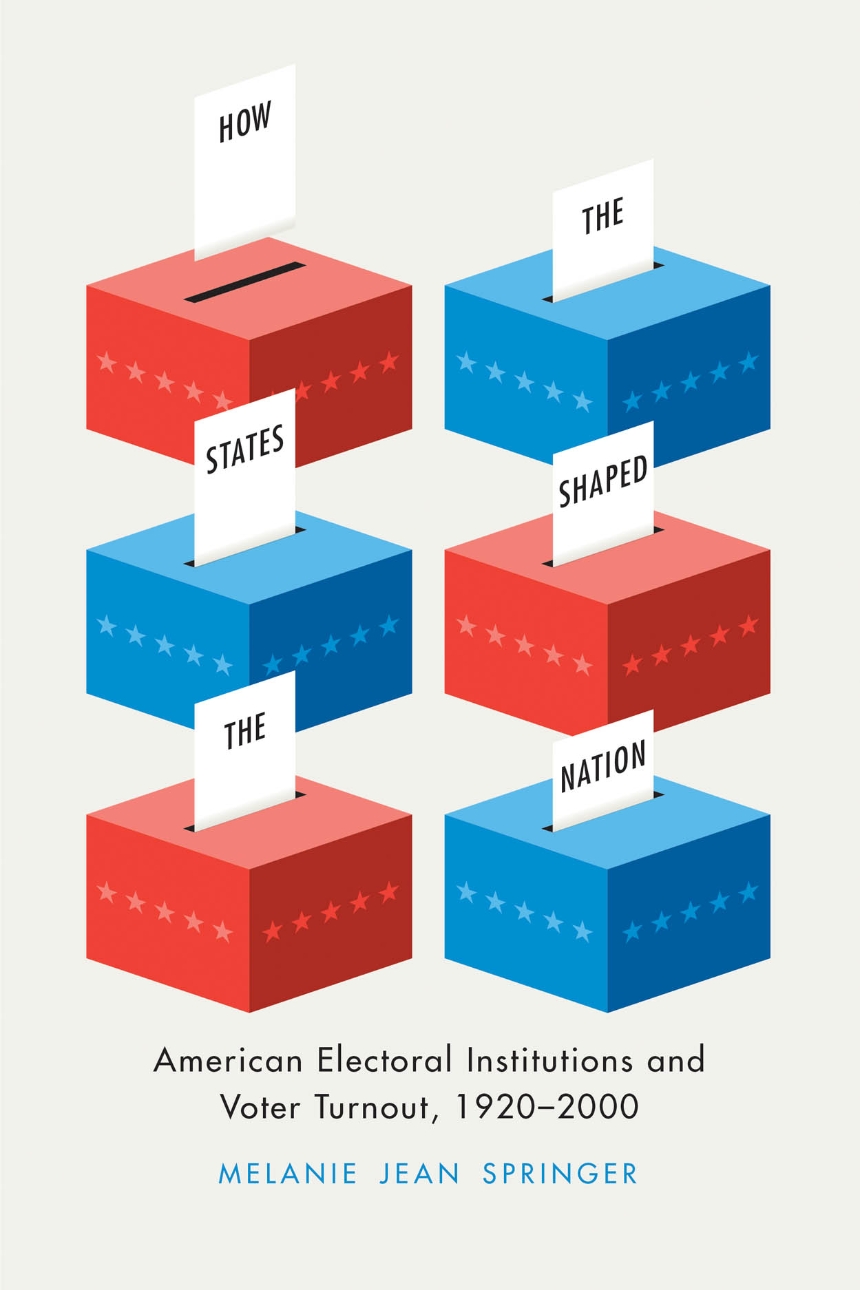How the States Shaped the Nation
American Electoral Institutions and Voter Turnout, 1920-2000
9780226114217
9780226114187
9780226114354
How the States Shaped the Nation
American Electoral Institutions and Voter Turnout, 1920-2000
The United States routinely has one of the lowest voter turnout rates of any developed democracy in the world. That rate is also among the most internally diverse, since the federal structure allows state-level variations in voting institutions that have had—and continue to have—sizable local effects. But are expansive institutional efforts like mail-in registration, longer poll hours, and “no-excuse” absentee voting uniformly effective in improving voter turnout across states?
With How the States Shaped the Nation, Melanie Jean Springer places contemporary reforms in historical context and systematically explores how state electoral institutions have been instrumental in shaping voting behavior throughout the twentieth century. Although reformers often assume that more convenient voting procedures will produce equivalent effects wherever they are implemented, Springer reveals that this is not the case. In fact, convenience-voting methods have had almost no effect in the southern states where turnout rates are lowest. In contrast, the adverse effects associated with restrictive institutions like poll taxes and literacy tests have been persistent and dramatic. Ultimately, Springer argues, no single institutional fix will uniformly resolve problems of low or unequal participation. If we want to reliably increase national voter turnout rates, we must explore how states’ voting histories differ and better understand the role of political and geographical context in shaping institutional effects.
With How the States Shaped the Nation, Melanie Jean Springer places contemporary reforms in historical context and systematically explores how state electoral institutions have been instrumental in shaping voting behavior throughout the twentieth century. Although reformers often assume that more convenient voting procedures will produce equivalent effects wherever they are implemented, Springer reveals that this is not the case. In fact, convenience-voting methods have had almost no effect in the southern states where turnout rates are lowest. In contrast, the adverse effects associated with restrictive institutions like poll taxes and literacy tests have been persistent and dramatic. Ultimately, Springer argues, no single institutional fix will uniformly resolve problems of low or unequal participation. If we want to reliably increase national voter turnout rates, we must explore how states’ voting histories differ and better understand the role of political and geographical context in shaping institutional effects.
See the web appendix referenced in the book.
240 pages | 22 line drawings, 20 tables | 6 x 9 | © 2014
Chicago Studies in American Politics
Political Science: American Government and Politics, Political Behavior and Public Opinion
Sociology: Social Change, Social Movements, Political Sociology
Reviews
Table of Contents
List of figures
List of tables
Acknowledgments
One Introduction
Part 1: The State of Electoral Institutions and Voter Turnout
Two Electoral Federalism and Participation in the American States
Three Twentieth-Century Voter Turnout in the United States
Four A History of Twentieth-Century State Electoral Institutions
Part 2: State and Regional Analyses
Five Exploring the Effect of Electoral Institutions on Twentieth-Century Voter Turnout in the American States
Six Where Are the High Turnout States?
Seven Voting in the Southern States during and after Jim Crow
Eight Conclusion: The Future of Electoral Reform
Appendix A: State-by-State Voter Turnout Rates Compared with the Average National Voter Turnout Rate during Election Years, 1920–2000 (online only: www.press.uchicago.edu/sites/springer/)
Appendix B: Mississippi Voter Registration Application Form
Appendix C: Descriptive Statistics, Presidential Election Years, 1920–2000
Appendix D: Descriptive Statistics, Nonpresidential Election Years, 1922–98
Notes
Works Cited
Index
List of tables
Acknowledgments
One Introduction
Part 1: The State of Electoral Institutions and Voter Turnout
Two Electoral Federalism and Participation in the American States
Three Twentieth-Century Voter Turnout in the United States
Four A History of Twentieth-Century State Electoral Institutions
Part 2: State and Regional Analyses
Five Exploring the Effect of Electoral Institutions on Twentieth-Century Voter Turnout in the American States
Six Where Are the High Turnout States?
Seven Voting in the Southern States during and after Jim Crow
Eight Conclusion: The Future of Electoral Reform
Appendix A: State-by-State Voter Turnout Rates Compared with the Average National Voter Turnout Rate during Election Years, 1920–2000 (online only: www.press.uchicago.edu/sites/springer/)
Appendix B: Mississippi Voter Registration Application Form
Appendix C: Descriptive Statistics, Presidential Election Years, 1920–2000
Appendix D: Descriptive Statistics, Nonpresidential Election Years, 1922–98
Notes
Works Cited
Index
